Write a program that implements the stack ADT described in
. Write a program that implements the stack ADT described in Section 3.4, “Stack ADT.” To test your implementation, write a menu-driven user interface to test each of the operations in the ADT. For the test, use integer data as described below. Error conditions should be printed as a part of the test results. A suggested menu is shown below. Test your program with the following test case. You may include additional test cases. The menu operation is shown at the end of the test. a. Print stack status: Empty [E] b. Pop and print data (should return error) [B] c. Push data into stack: 1 [A] d. Push data into stack: 2 [A] e. Print stack status: Empty [E] f. Print stack status: Full [F] g. Print data at top of stack [C] h. Print entire stack (top to base) [D] i. Print number of elements in stack [G] j. Pop and print data [B] k. Pop and print data [B] l. Pop and print data (should return empty) [B] m. Push data into stack: 3 [A] n. Print data at top of stack [C] o. Destroy stack and quit [H]
Solution
#include<iostream>
#include<conio.h>
#include<stdlib.h>
using namespace std;
class stack
{
int stk[2]; //Stack size
int top; //Top position
public:
stack() //Constructor
{
top = -1; //Initialize top to -1
}
//Push operation
void push()
{
int x;
//Checks for Stack full
if(top >= 1)
{
cout <<\"\ Stack Status: Full\";
return;
}
//Accepts data
cout <<\"\ Enter the element: \";
cin >> x;
//Increase the stack top and stores data
stk[++top] = x;
cout <<\"\ Push data into stack: \"<<x;
}
//Stack top value displayed
void TopPos()
{
cout<<\"\ Top Element: \"<<stk[top];
return;
}
//Pop element from stack
void pop()
{
//Checks for Empty
if(top < 0)
{
cout <<\"\ Error: Stack Underflow \";
return;
}
//Displays the deleted item
cout <<\"\ Deleted\" <<stk[top--];
}
//Displays the complete stack data
void display()
{
//Checks stack is empty or not
if(top < 0)
{
cout <<\"\ Stack status: Empty \";
return;
}
for(int i = top;i >= 0; i--)
cout <<stk[i] <<\" \";
}
//Count and display number of elements in the stack
void countEle()
{
int co = 0;
for(int i = top; i >= 0; i--)
co++;
cout<<\"\ Number of element in the stack: \"<<co;
}
};
main()
{
char ch;
stack st; //Creates an object of stack
//Loops till H is pressed
while(1)
{
cout<<\"\ B. POP \";
cout<<\"\ A. PUSH \";
cout<<\"\ C. TOP \";
cout<<\"\ D. Display \";
cout<<\"\ G. Count \";
cout<<\"\ H. Exit \";
cout<<\"\ Enter your choice: \";
cin >> ch;
switch(ch)
{
case \'B\':
st.pop(); break;
case \'A\':
st.push();
break;
case \'C\':
st.TopPos(); break;
case \'D\':
st.display();break;
case \'G\':
st.countEle(); break;
case \'H\':
exit(0);
}
}
return (0);
}
Output:
B. POP
A. PUSH
C. TOP
D. Display
G. Count
H. Exit
Enter your choice: D
Stack status: Empty
B. POP
A. PUSH
C. TOP
D. Display
G. Count
H. Exit
Enter your choice: B
Error: Stack Underflow
B. POP
A. PUSH
C. TOP
D. Display
G. Count
H. Exit
Enter your choice: A
Enter the element: 1
Push data into stack: 1
B. POP
A. PUSH
C. TOP
D. Display
G. Count
H. Exit
Enter your choice: A
Enter the element: 2
Push data into stack: 2
B. POP
A. PUSH
C. TOP
D. Display
G. Count
H. Exit
Enter your choice: A
Stack Status: Full
B. POP
A. PUSH
C. TOP
D. Display
G. Count
H. Exit
Enter your choice: C
Top Element: 2
B. POP
A. PUSH
C. TOP
D. Display
G. Count
H. Exit
Enter your choice: D
2 1
B. POP
A. PUSH
C. TOP
D. Display
G. Count
H. Exit
Enter your choice: G
Number of element in the stack: 2
B. POP
A. PUSH
C. TOP
D. Display
G. Count
H. Exit
Enter your choice: B
Deleted2
B. POP
A. PUSH
C. TOP
D. Display
G. Count
H. Exit
Enter your choice: B
Deleted1
B. POP
A. PUSH
C. TOP
D. Display
G. Count
H. Exit
Enter your choice: B
Error: Stack Underflow
B. POP
A. PUSH
C. TOP
D. Display
G. Count
H. Exit
Enter your choice: A
Enter the element: 3
Push data into stack: 3
B. POP
A. PUSH
C. TOP
D. Display
G. Count
H. Exit
Enter your choice: C
Top Element: 3
B. POP
A. PUSH
C. TOP
D. Display
G. Count
H. Exit
Enter your choice: H
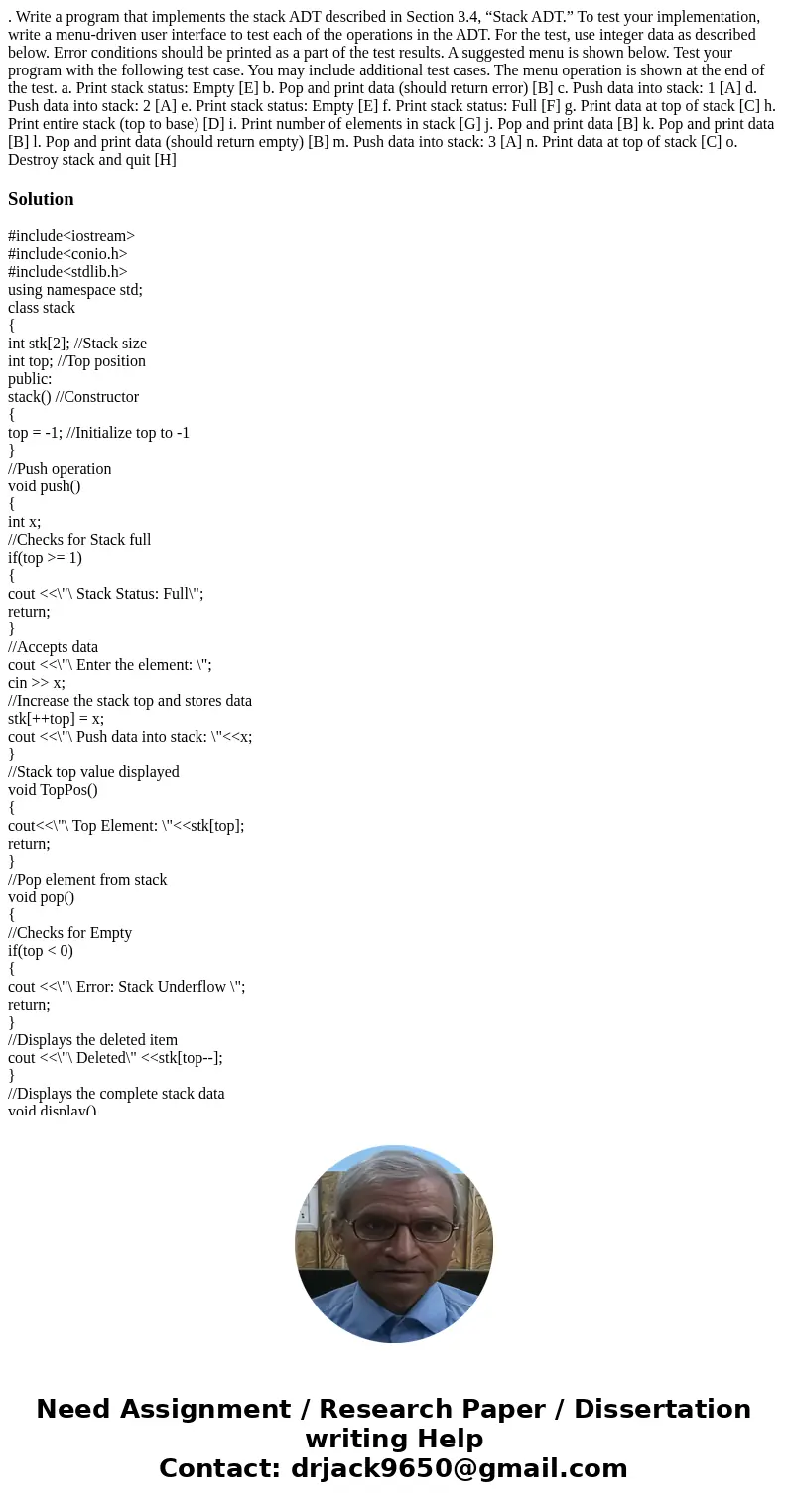
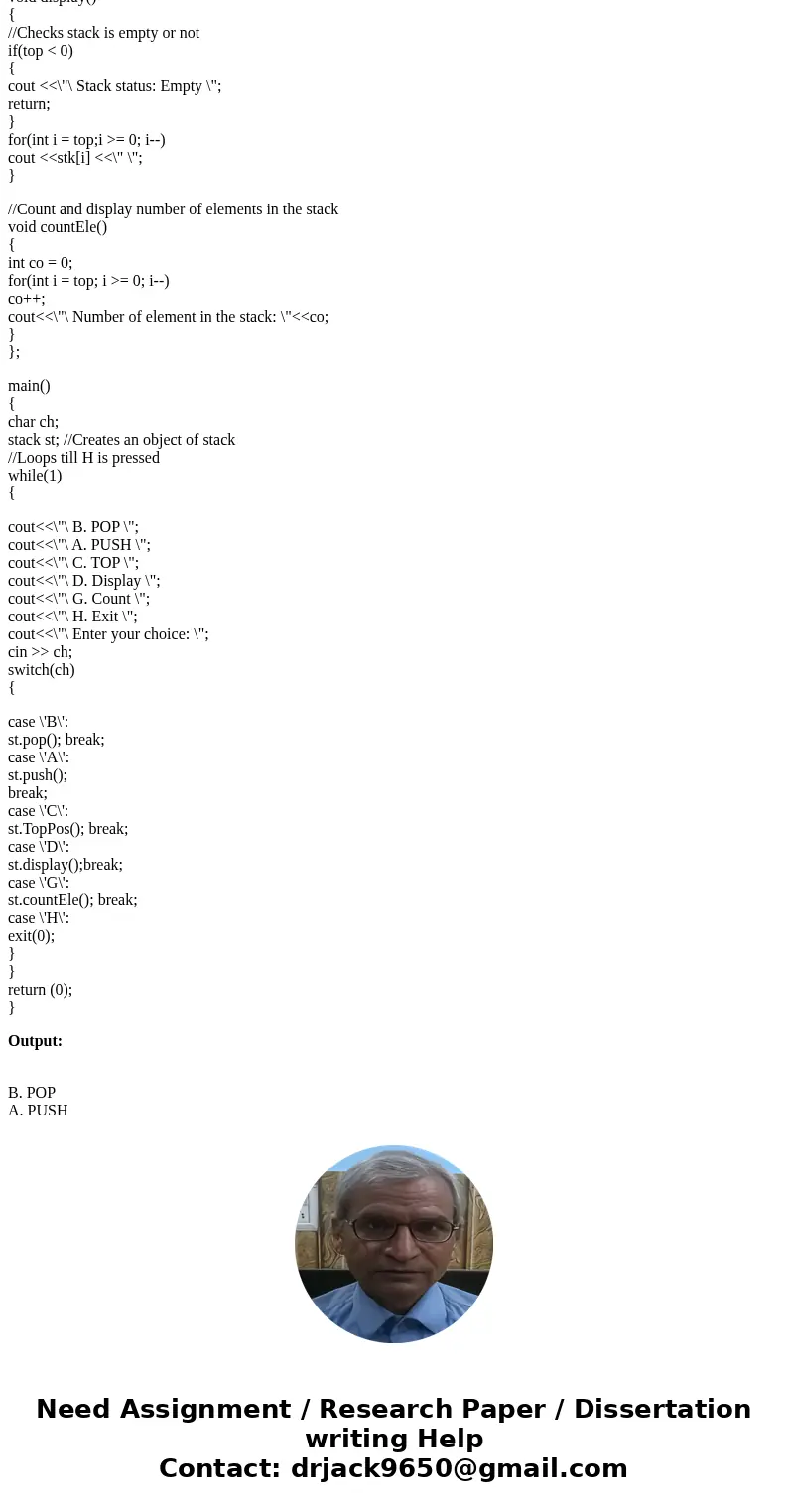
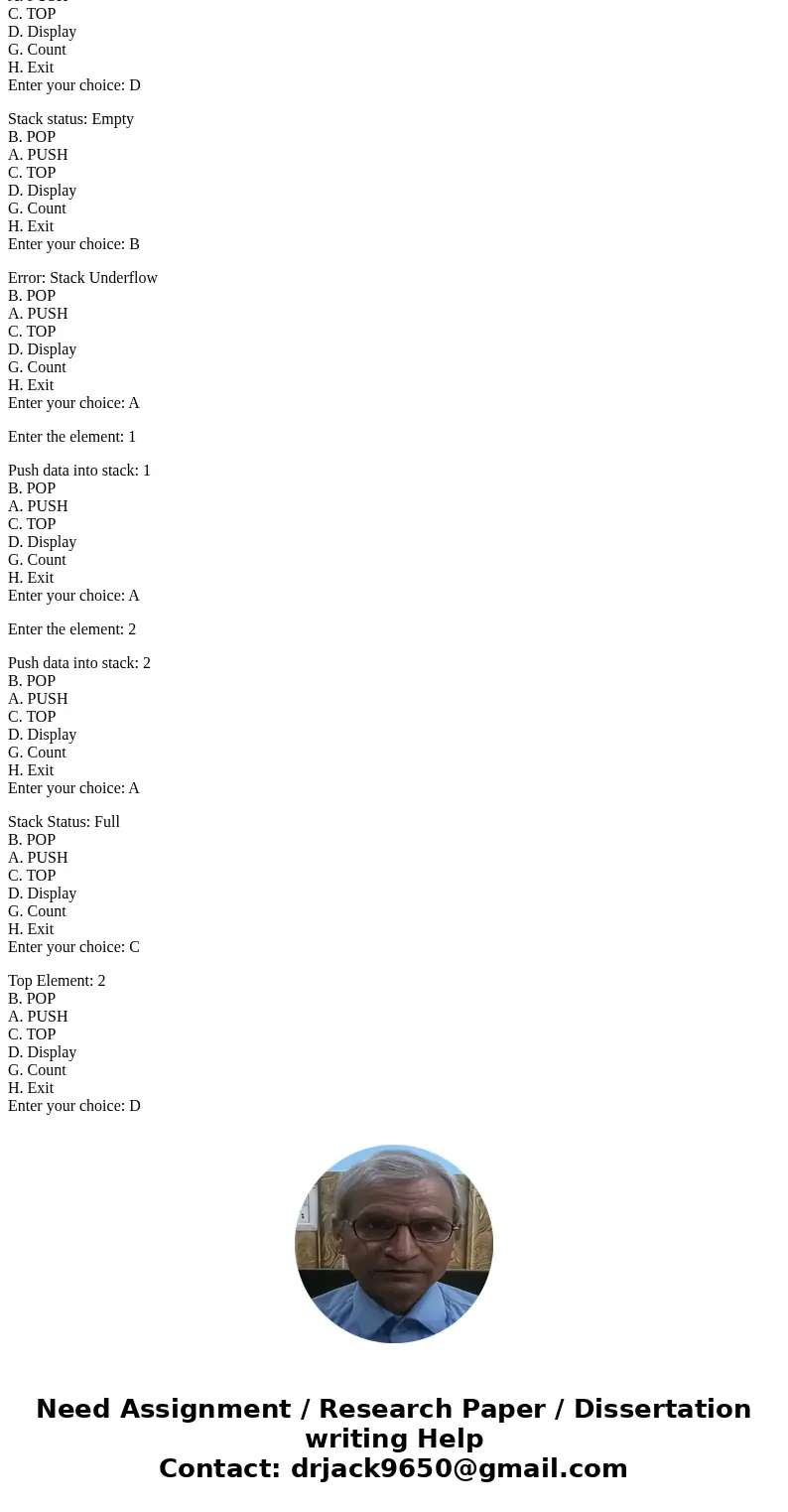
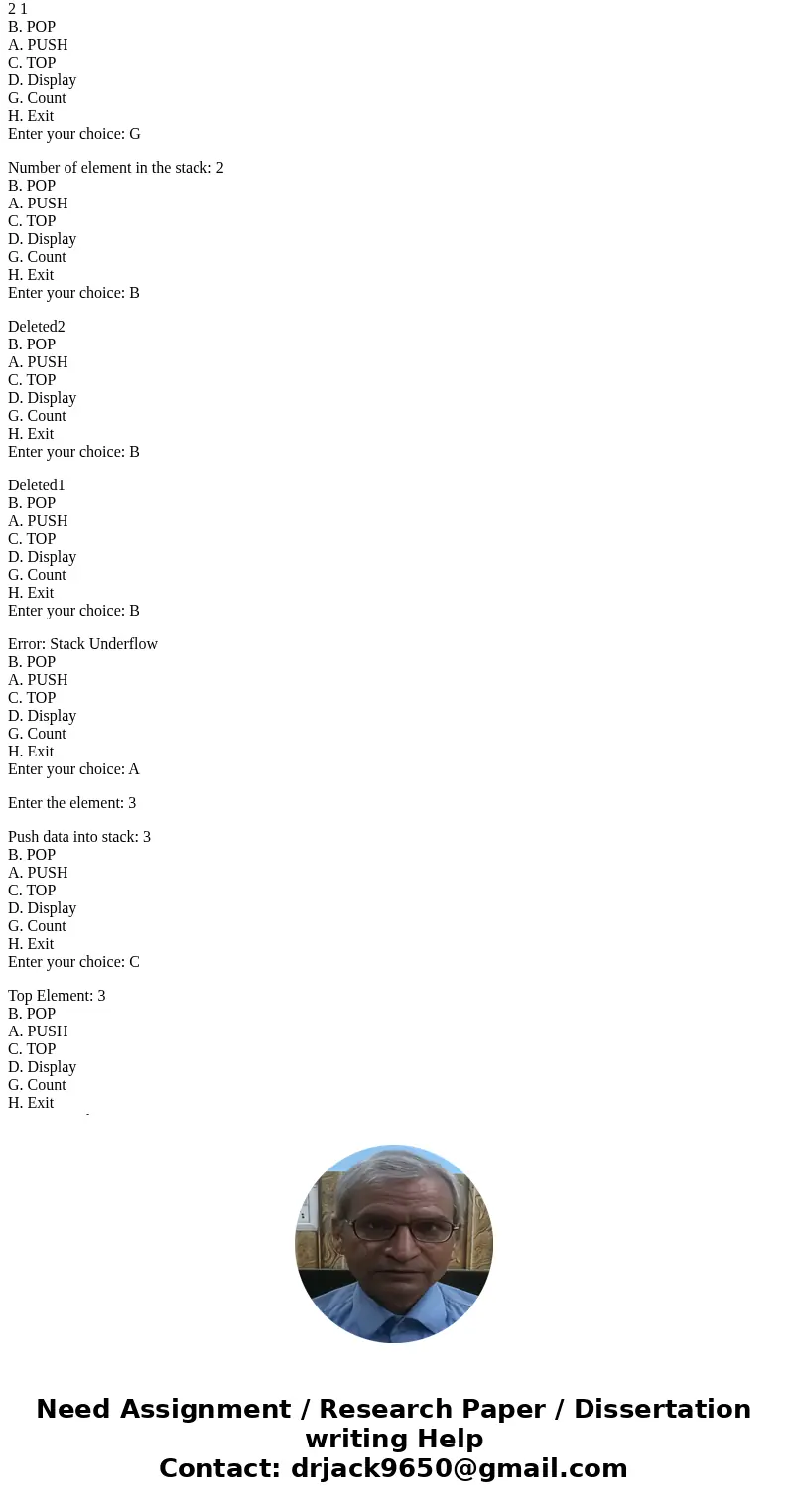
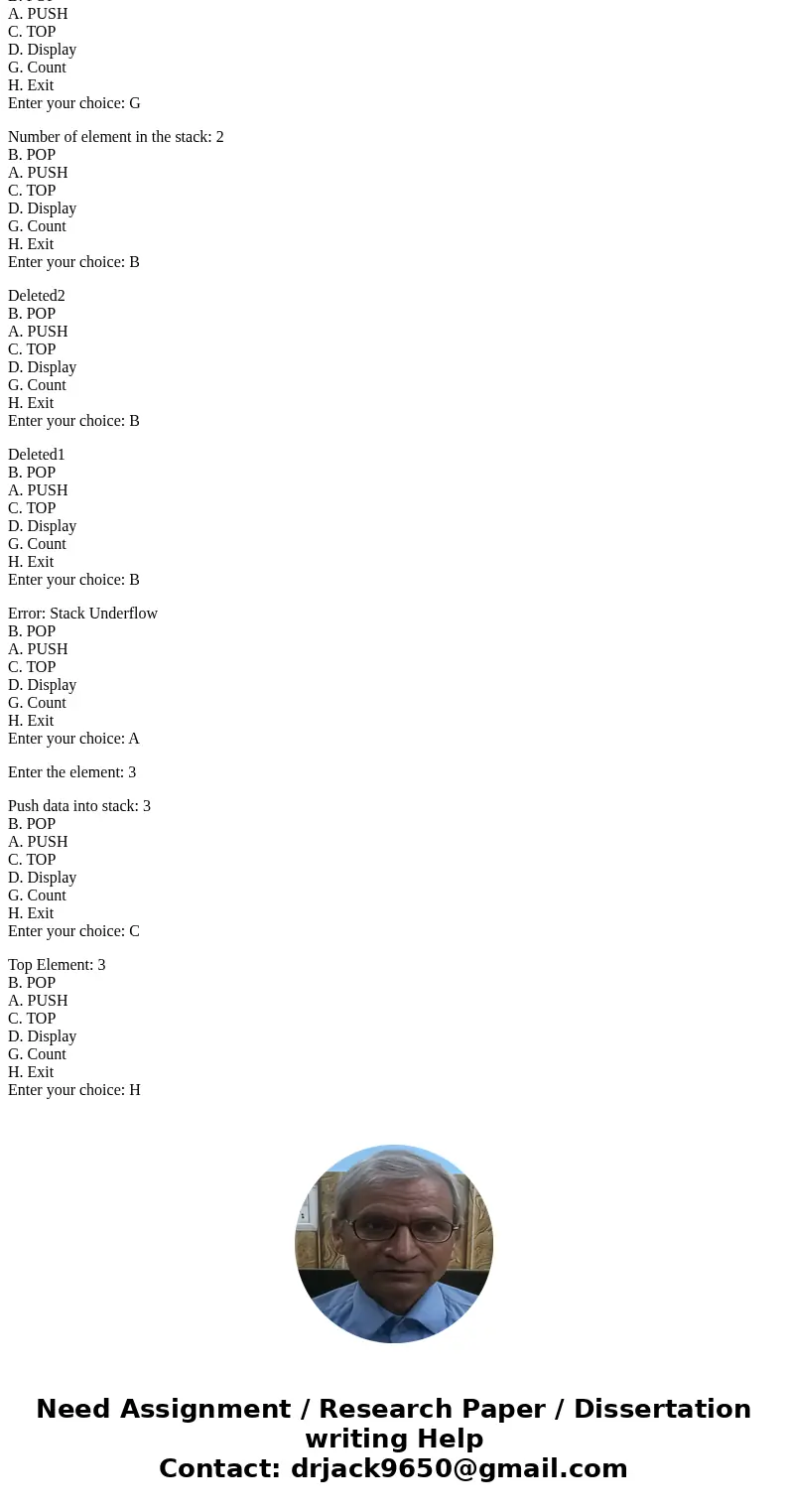
 Homework Sourse
Homework Sourse